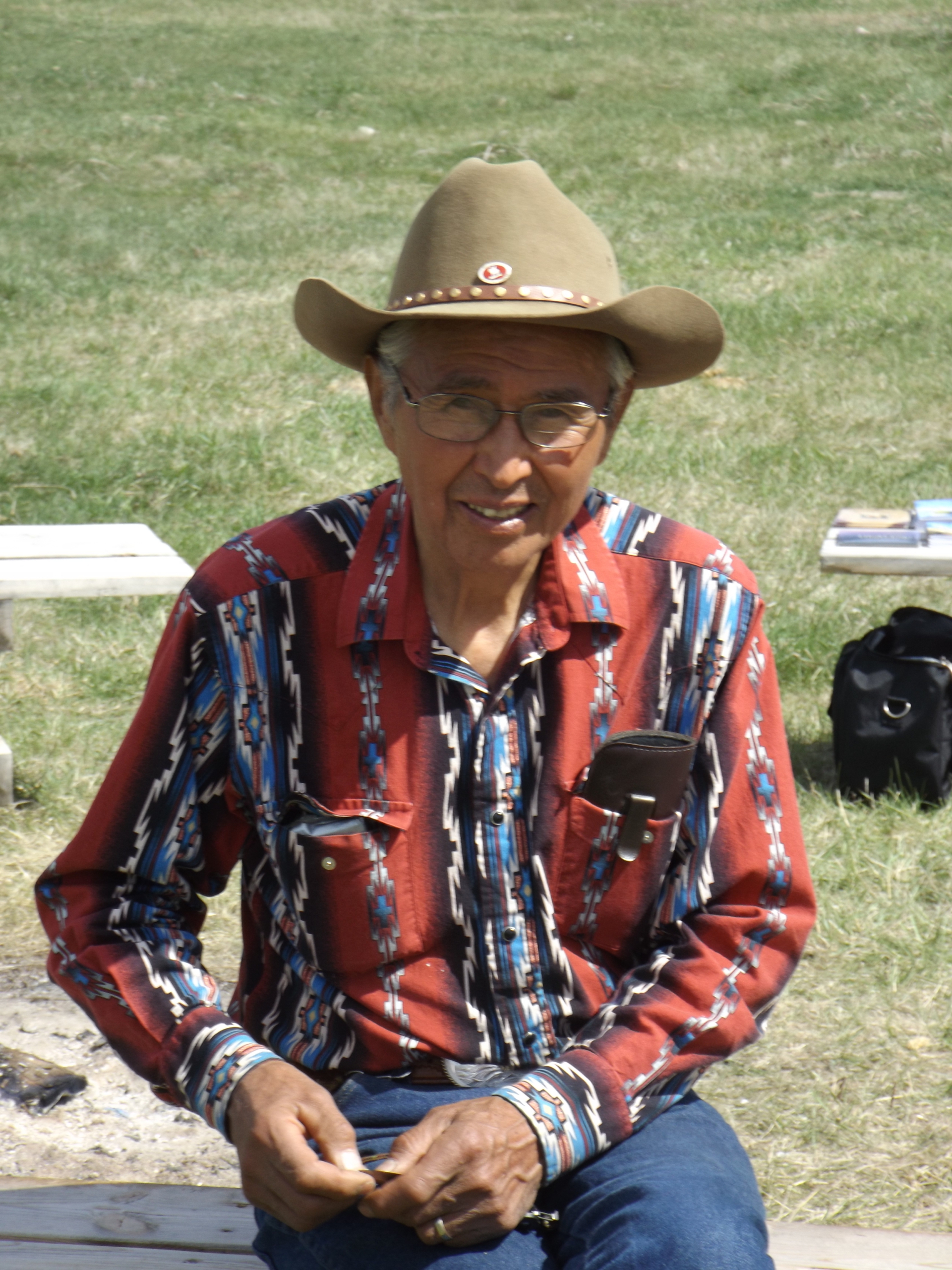
Wilfred Anderson | Working Cowboy
Born February 28, 1940 at his grandfather George Moore’s ranch at Spokin Lake near Williams Lake, B.C. Wilfred was the oldest of his siblings by seven years, Mel, Winnie, Clara (Reaugh) and Dennis Anderson would follow. He grew up riding a horse and travelled by horseback to school many miles away at Rose Lake. Wilfred has many relatives in the Cariboo Chilcotin and beyond. His ancestry is Shuswap, Chilcotin and Irish, he was a member of the Williams Lake First Nation. His mother was Agnes Anderson (Moore) (Tillian) and his maternal Grandfather was Chief William. When his mom married Oscar Anderson, Wilfred became the unpaid hired hand. Oscar was a noted horseman from Idaho. Wilfred started and rode many horses growing up.
Wilfred and his brother Mel held Jackpot Rodeos at the ranch in Miocene. Wilfred, his brother Mel and best friend Gordon Mackenzie, started in the sport of rodeo at the Anahim Lake Stampede. While still at home, Wilfred worked for Doc Bell at the 150 Mile Ranch. Wilfred rodeoed for about 10 years while also acting as pickup man. Bulls were his favourite but he also rode saddle bronc, bareback and a little jackpot roping.
Wilfred’s first job away from time was at Douglas Lake Cattle Company where he rode with Slim Campbell, whom he considered “one of the best cowboys ever.” While working with Slim, Wilfred learned the art of roping and doctoring animals. Many horses were started by Wilfred during this time, one being “Cow Country”, a bucking horse that went on to the rodeo finals 5 times. Upon leaving Douglas Lake, Wilfred came home, purchased a team and started in the horse logging business. He also worked as a Hunting Guide for Grizzlies in the Cariboo Mountains for 10 years. Wilfred became adept at problem shoeing and also raised race horses.
Wilfred and his first wife Liz purchased the EP Lee Ranch at Redstone which they renamed 3 Bars Cattle Company. He rounded up and worked with wild horses during this time, while also continuing in the sport of rodeo as pickup man working with Roy Mulvahill.
Wilfred and his second wife Betty (Macalister), who were married 2002 at the Redstone Rodeo, spent countless hours riding to “visit” the wild horses of the Chilcotin. They had a small ranch on the west side of the Fraser River, from where the couple enjoyed taking their team of percherons on the 9-day wagon trip from Nehemiah to Williams Lake, which they completed 3 times. Wilfred died February 1, 2017. A horseman till the end.
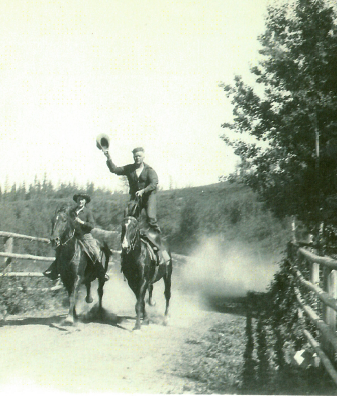
Earl Buck | Pioneer
Earl Arzeno Buck was born in Allegan, Michigan in 1905. The family moved briefly to Nebraska before heading to Abbey, Saskatchewan in the Sandhills, where Earl and his siblings would grow up. Earl and his brother Elton moved to Fort St. James in 1923, finding employment at the Cassiar Ranch, where they had to do major repairs to the roof of the old cabin roof to make it through the first winter. Earl spent several years travelling back to Saskatchewan to help on the family farm with seeding and harvest. While there he would compete in rodeos and perform as a trick rider. On one of these trips home, he met Claire Schaver, whom he would marry in 1930.
Earl and Claire settled in Fort St. James on the banks of the Nak’azdli River, laying the foundations for what would become the Necoslie River Ranch. With the exception of some road building and horse freighting contracts, Earl was devoted to developing the ranch and raising cattle and horses. He rode his saddle horse working cattle until he was 76 years old. Earl and Claire built the ranch from scratch, literally cutting it out of the wilderness by hand and with a team of horses and plow. Earl and Claire would have four children, Doreen, Ronald, Sharon, and Aaron.
Earl started competing in rodeo in B.C in 1927 at the Vanderhoof Diamond Jubilee, where he took five first prizes in western events. With the fun of the event over, he and Justa Sam headed back to Cassiar to put up 70 acres of oats with only a team and mower. Earls love of rodeo never waivered and he competed in many rodeos as far west as Prince Rupert. He was also an avid promoter of the sport and supplied some of the rough stock for the events. The annual Kispiox Rodeo still holds a Cowhide race in his memory. All of Earl’s children went on to become rodeo competitors.
Through the 1930’s and early 1940’s Earl drove freight wagons usually with a team of six to the more northern communities of Manson, Germansen, and Slate Creek, going up over Baldy Mountain, which often involved shovelling snow for miles. Claire would often drive a smaller wagon while looking after Doreen. Through the 1940’s Earl would pack freight with his team to the mines at Sowchea Creek, Pioneer and up to the lookout on Mt. Pope.
Earl promoted rodeos in both Ft. St. James and Vanderhoof. In 1945 it was Earl, Justa Sam and Duncan Sam who built the chutes, corrals and laid the groundwork for the stampede on the Rancheree flats. Horse races were also held with both Earl and his daughter Doreen competing.
In 1956 Earl founded the Sinkut Mountain Cattlemen’s Association, which is still going strong. Earl also wrote several articles about cattle ranching that were published in The Canadian Cattleman’s magazine. Earl was a writer and a poet, keeping a winter journal most of his life, with several published poems to his credit.
In his later years Earl took up draught horse pulling as a hobby. He and his team were well known in the area. The Necoslie River Ranch is still in the family and is now a century ranch. Earl passed away in Fort St. James February 25, 1986.
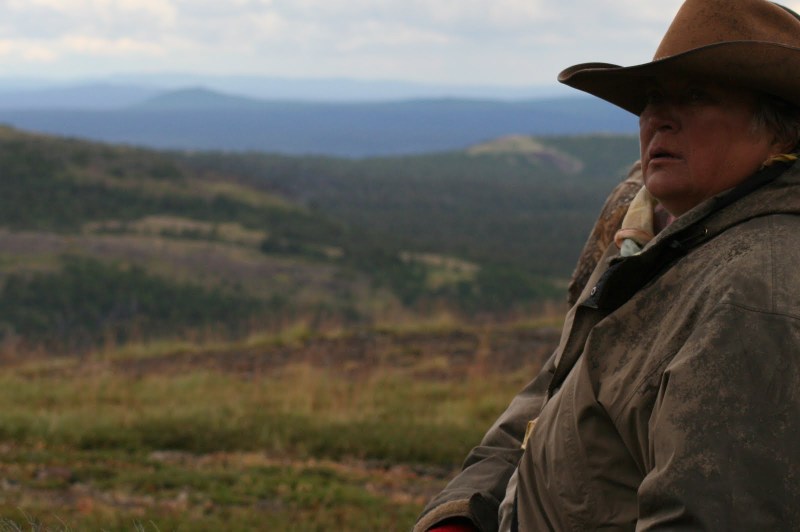
Wanda Dorsey | Pioneer
Wanda Dorsey was born August 1951 to Lester and Mickey Dorsey of Anahim Lake, B.C. Her mother Mickey grew up in Bella Coola and Lester had arrived from the States in 1922 and had a hand in starting many of the ranches in the Anahim Lake area. His only daughter, Wanda, has carried on his legacy. Times were not easy being raised in a household of brothers, yet Wanda grew up strong and capable. She tells stories of her younger brother making money by betting Wanda could beat any other student in arm wrestling. (A strength born of handling a team and dump rake all summer.) She also has hair-raising stories of her and her little brother, riding by themselves at the ages of 11 and 13, to Tatla Lake for the school year (about 120kms) with a note in their pocket from their mom saying “These are my kids, please feed and water them and their horses” for their nightly stops at local ranches.
When Wanda first started to buy the Four Mile Ranch from her parents, as a young adult, the only way to access it was by horseback or wagon. She purchased the herd of Hereford cattle with the ranch. Although the chosen cattle breed eventually changed and motorized vehicles made it in, Wanda has never lost her love for tending cattle from horseback.
Wanda met her life partner, Roger Williams in 1979, and together they expanded the ranch adding the Mooney/Donahue place in 1988. They both enjoyed trapping and Roger especially enjoyed guiding for moose and caribou. Together they increased and improved the cattle herd and raised, trained and purchased horses to develop a fine string of animals.
In 1985, needing some money for fuel for the haying equipment, Wanda reluctantly agreed to guide a group of experienced women on a trip solo. The ride was the beginning of a solid business, taking guests in to the Rainbow, Ilgatchuz and Itcha mountains for 7 – 16 day long trips. Up until 2022, Wanda was still guiding, cooking and helping saddle and pack the 24+ head of horses required for these trips.
2003 saw Wanda and Roger purchase the Three Circle Ranch with their daughter and her husband, this partnership is still thriving. Though health has forced retirement in 2023, both her and Roger plan to stay and remain active and involved on the family ranch. She has two sons and one daughter, exceptional grandchildren and many people who are proud to call her a mentor, friend and teacher.
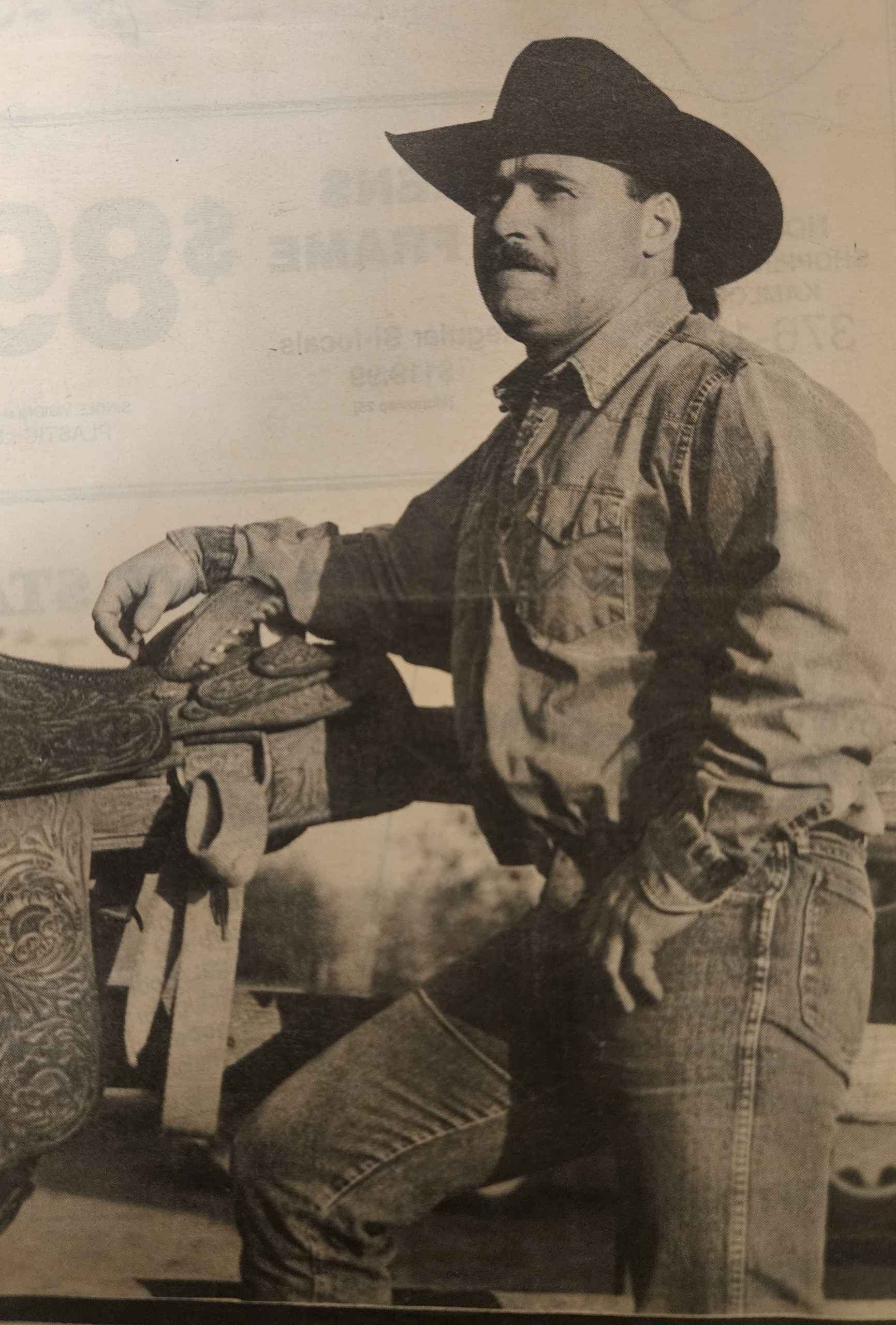
Stoney Waterston | Competitor
Stoney was born a 2nd generation cowboy; he learned his love for the sport from his father. Growing up in the Chase/Kamloops area he started in the BC High School Rodeo Association, where as an athlete he worked all events from both ends of the arena and became a well decorated “True All Around Cowboy”. After high school he progressed into the Interior Rodeo Association (IRA) and other amateur associations where he won individual event awards as well as continuing with his All-Around status. Stoney was a very tough competitor in both rough stock and timed events. As he gained experience and his talents grew, Stoney progressed into the C.P.R.A. and continued his successful run within the professional rodeo ranks in Canada. With the move to professional status, he kept his focus on Calf Roping and Steer Wrestling. His list of achievements includes multiple rodeo wins, he was the 1992 season leader, had over ten qualifications for the prestigious Calgary Stampede where he made it to the Top 4 $50,000 showdown once, and notable appearances at the Canadian Finals Rodeo (CFR), including a remarkable season leader position in steer wrestling. Stoney was also recognized locally as Kamloops BC Male Athlete of the Year.
With his love for rodeo, it tied nicely in the ranching and cattle industry, and this is where Stoney has made his professional working career. With his strong knowledge of the cattle industry, he has worked and maintained strong relationships with many of the ranches throughout B.C. Stoney has also managed herds in the Kamloops area for some of the prominent cattle buyers. He has also been a B.C. Brand Inspector for over 20 years. On the lighter side he also became well known for his “funny cartoon art”, depicting local characters and common situations.
Stoney and his wife Donna have three daughters and now three grandchildren. The Waterston lineage is now on the 4th generation in the sport of rodeo. He actively engages in coaching and mentoring young cowboys and cowgirls, sharing his wisdom and passion for the cowboy way of life. His dedication extends to organizing clinics, competitions, and being an important person in the organization of the Kamloops Pro Rodeo.
With his love for rodeo, cattle and the cowboy way of life, Stoney continues to work as a cattle buyer for the Kanart Cattle Company. He also continues to Team Rope competitively and mentors the younger generations.
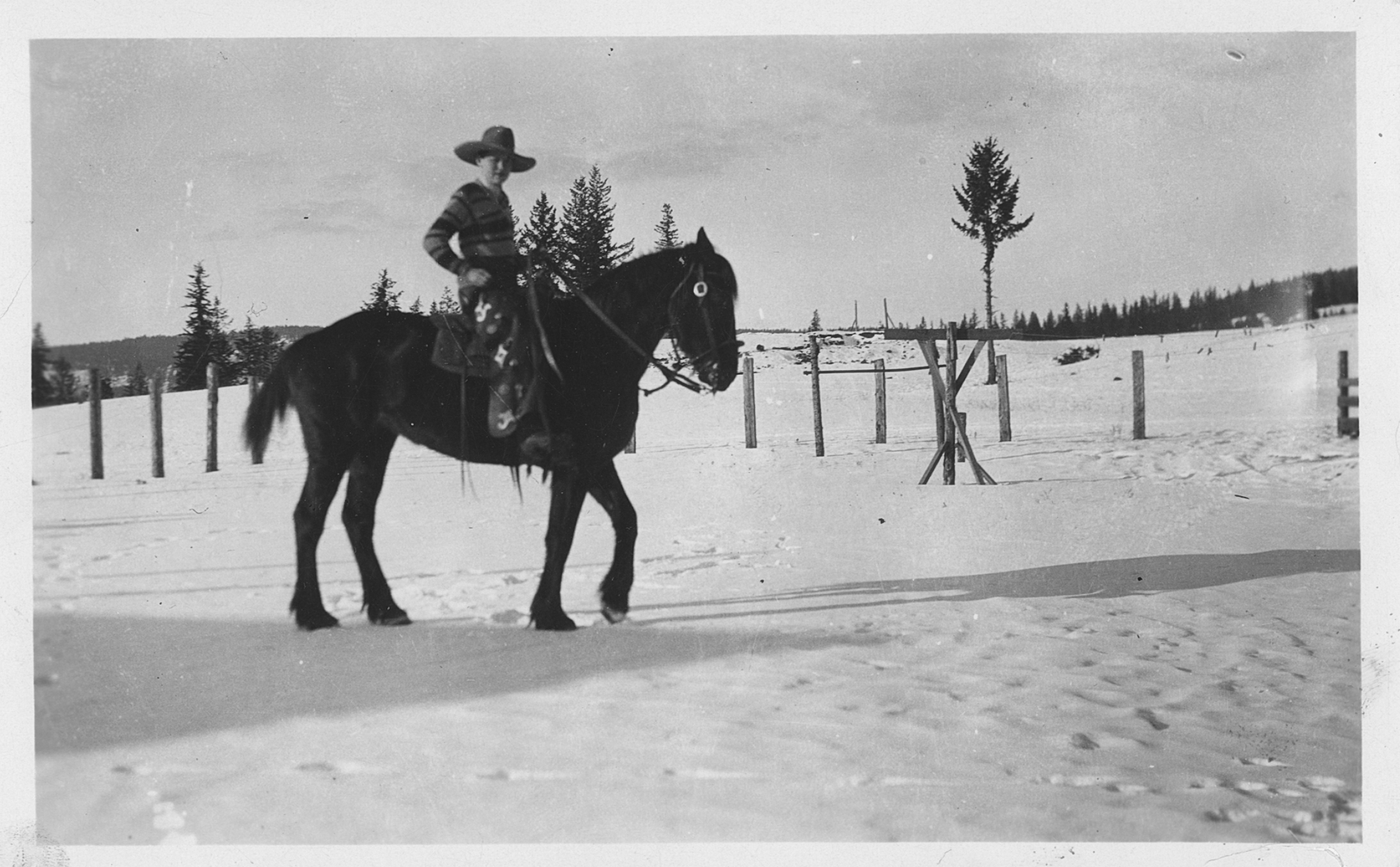
Ollie Curtis | Competitor
Olive (Ollie) Curtis (Norberg) (Matheson) was the third child born to Harry and Julia on June 23, 1908 at Chimney Creek. Ollie first attended school at Soda Creek, until a school was later built in Alkali. Ollie started competing in horse events at the age of 14. As a teenager she was named B.C All-Around Champion Cowgirl in 1927, and held the title for B.C Girls Steer Riding Champion for three years. She was the first woman to compete in the spectacular Mountain Race at the Williams Lake Stampede, coming in second in 1927. She received a Silver Tea Set from the Premier of the Province. She also competed in Bronc Riding and Flat Racing. Ollie and her brothers, Ray, Marvin and Peter were pioneers in the development of the Williams Lake Stampede and competed for many years in various events.
Ollie married Al Norberg in 1928. Her father and brothers helped to build the couples first home at the corner of Third and Barnard in Williams Lake. The couple moved to Kamloops in 1932 where Ollie completed Business College. After 14 years of marriage the couple separated and Ollie moved back to Williams Lake with her two sons Doug and Reg. She started work as a bookkeeper at Mackenzie’s Store, and later moved to work for the Department of Highways as a secretary. In 1961, Ollie and her son Reg purchased an Insurance Company renaming it Norberg and Matheson.
Ollie’s dedication extended beyond her professional pursuits; she devoted many years to volunteering for the Williams Lake Stampede Association, serving as secretary for 11 years. Her lifelong interest in rodeo and active participation in curling, golf, bridge and cooking showcase her vibrant spirit and diverse interests.
Ollie passed away June 8, 1986. Her story is an inspiration to all.
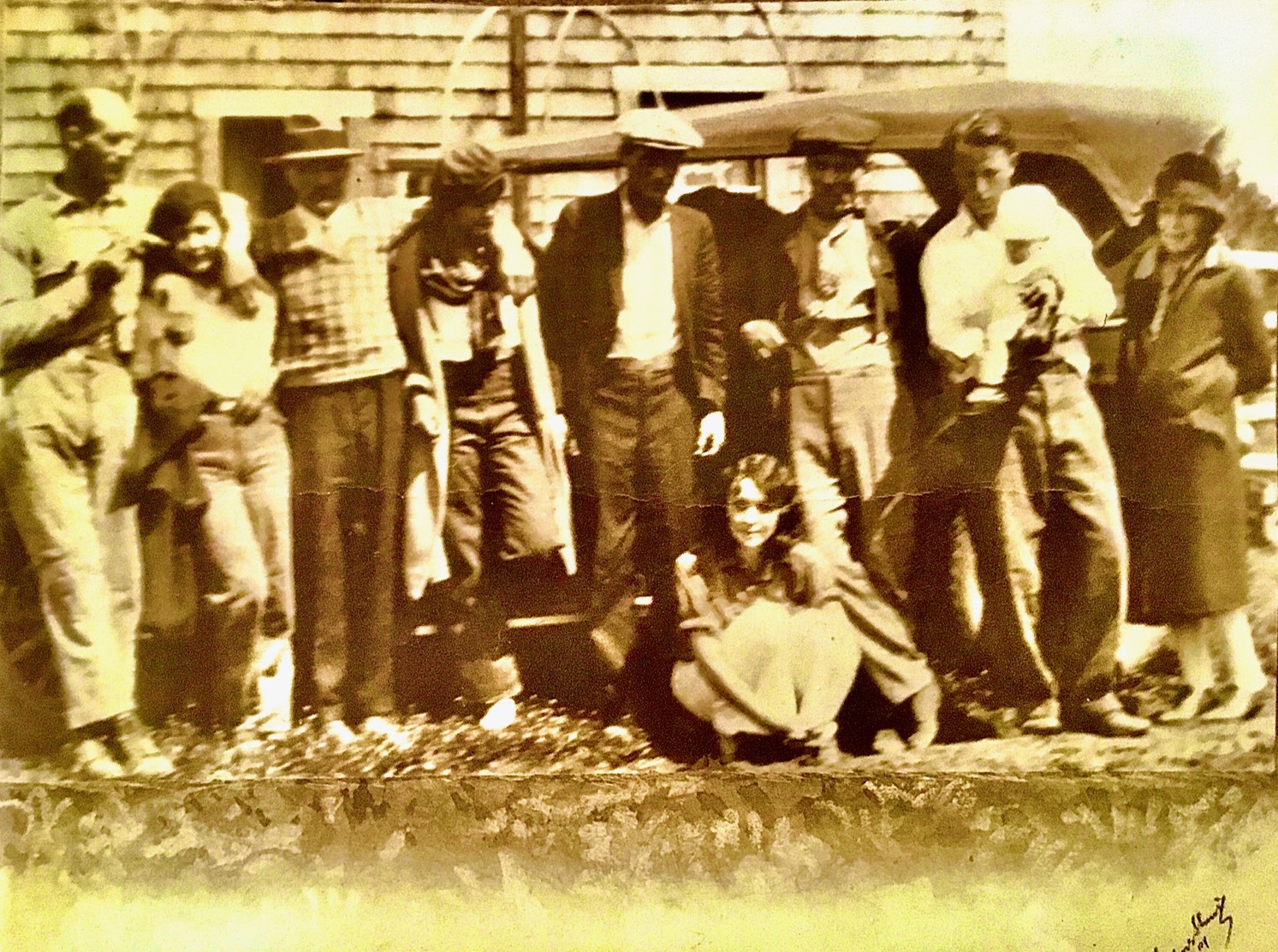
The Historic Rose Ranch | Century Ranch
The Rose family’s history is a rich tapestry of perseverance, hard work and community contribution spanning over a century. From James Rose’s early endeavors to his descendant’s commitment to maintaining the family ranch, each generation has led an indelible mark on the land and the surrounding community.
James Rose was born in 1872 in Barkerville, B.C to Fred and Emma Rose. James grew up in 150 Mile and by 1893, he purchased the property at what is now Rose Lake and Ochiltree. James married Matilda McLeese, and adopted her two sons from a previous marriage, James and Peter. They would later have their own children, Catherine, Mamie, Ena, and Walter (Buzzie).
Despite the challenges of war and loss, such as the tragic death of their eldest son James in World War I, the Rose family persevered, with each member contributing to the ranch’s growth and success. Peter contributed to the community through his craftsmanship in log home building resulting in the construction of the first schoolhouse. This highlights the family’s commitment to not only their own prosperity, but also the welfare of those around them.
Following Matilda and James’s passing, Catherine took the reins of the ranch, ensuring its continuity through her dedication and hard work. Her decision to pass the ranch down to her daughter, Noreen and her husband, Sture Kallman, ensured that the family legacy would endure into the next generation.
In 2015, the ranch was again passed down to great grandson Ingemar Kallman and his wife Loreen (MacCarvill), who have embraced the responsibility of stewarding the family ranch into the future. Despite the several challenges and setbacks that they have faced since taking over the responsibilities, the ranch will be celebrating 131 years in May of 2024. With Ingemar and Loreen’s children and grandchildren actively involved in the ranch’s operations, the Rose family’s legacy continues to thrive.
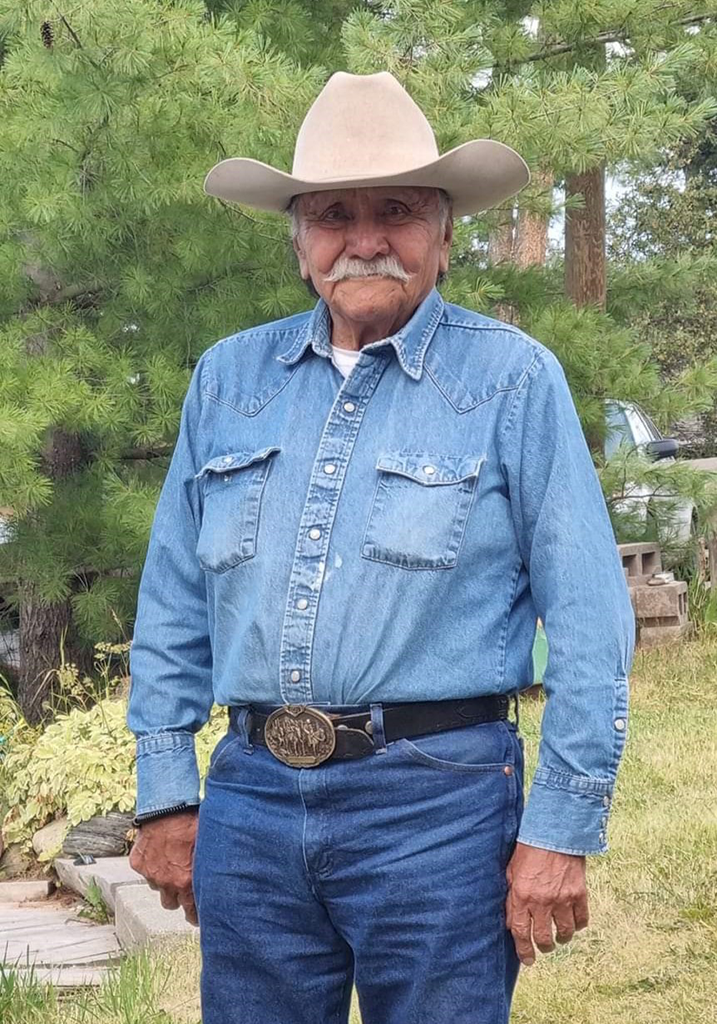
Isidore Kalelest | Family
Isidore’s life and career in ranching and agriculture reflect a deep connection to the land, hard work, and the traditional skills of a cowboy. Kalelest was raised in Canoe Creek, 85 km southwest of Williams Lake. At the age of 15, he found himself working for the BC Cattle Association, operating a Dump Rake. This was his first experience with ranching. Two years later, Isidore was hired by Jim Bishop, the ranch manager of the historic Gang Ranch. It was there, he would meet Red Matheson, an older cowboy, who would take Isidore under his wings and become his mentor.
His ability to adapt and learn new skills, from operating balers to teaching himself mechanics, demonstrates a remarkable determination to excel in his craft despite the challenges of working in remote and demanding environments like Gang Ranch. Isidore’s willingness to tackle any task, from fixing machinery to participating in grueling cattle drives past Gaspard Lake and into the Hungry Valley in extreme weather conditions, speaks to his dedication to his work. His ethics can be credited to his grandfather, Anyway, who often told Isidore, “If you’re going to go to work, be prepared and have everything ready. Expect the unexpected.”
During Isidore’s early years at the Gang Ranch, he married Rosemary Johnson, his childhood sweetheart from Canoe Creek. Rosemary and Isidore welcomed two children into the world, both born at the Cariboo Memorial Hospital in Williams Lake.
Isidore’s transition to various ranches and roles over the years underscores his versatility and expertise in agriculture. From the Gang Ranch to Chilco Ranch and eventually Empire Valley Ranch, he consistently contributed his skills and knowledge, building friendships and leaving a lasting impression on those he worked with. By this time, Isidore had remarried and had two more children with Doreen Peters.
His decision to relocate to Williams Lake in 1978 highlights his commitment to providing his children with educational opportunities, reflecting his values of family and community. Throughout his career, Isidore’s passion for ranching and his camaraderie with colleagues like Chris Kind exemplify the enduring bonds forged through shared experiences in the agricultural industry.
Isidore’s story is a testament to the enduring legacy of hardworking individuals who have shaped the landscape of ranching and agriculture in British Columbia, embodying the spirit of the cowboy and leaving behind a wealth of experiences and friendships.
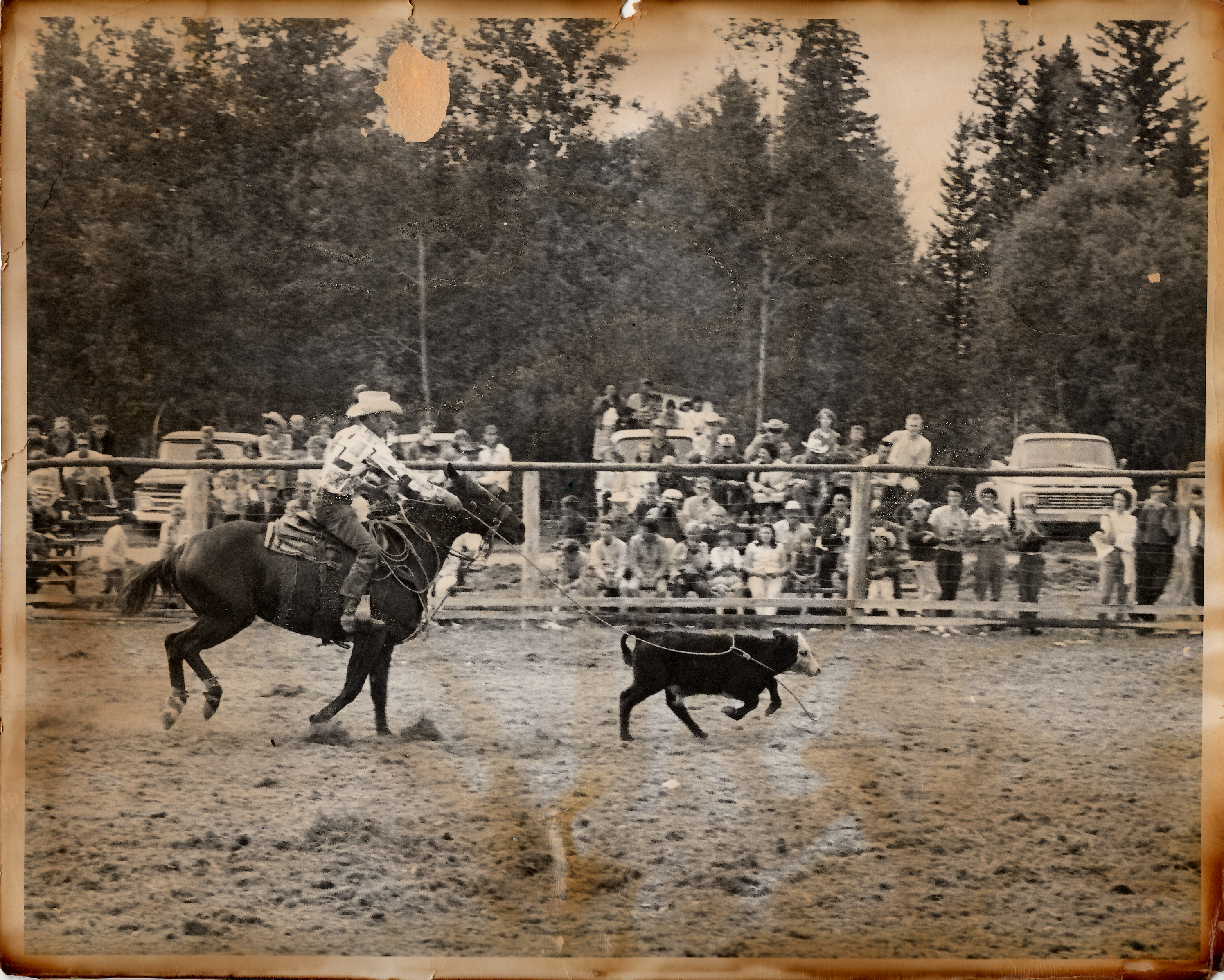
Bill Sure | Builder of Western Culture
Bill Sure was born in Wuppertal Germany in 1935, after watching John Wayne movies decided at a young age to move to North America to follow his dream. At the age of 19 he boarded a boat and headed for Canada, landing in the East he took odd jobs as he made his way west eventually settling in the B.C. interior. In 1960 Bill married Martha Dick from Alkali First Nation, they would have four children, Willie, Irene, Norma, and Donna. Bill worked on any ranch that would take him as he was determined to learn and develop cowboying skills. He learned to ride, break and train horses, cattle handling and roping.
Bill worked on both Douglas Lake and Alkali Lake Ranches, up unPl the birth of his fourth child, when he chose to take up his trade in Welding and Fabricating. His expertise in welding led to a side job in manufacturing horse trailers and roping dummies. Bill never hung up his spurs as he raised his four children in the cowboy and rodeo life. Bill competed in multiple events, team-roping, calf-roping, steer wrestling and later in breakaway. All the Sure children were taught to ride and rope. Bill was instrumental in founding the Spring House Sports Club which eventually evolved into the Interior Rodeo Association (IRA). The Sure children also excelled in the sport of rodeo, son Willie went on to be a bullfighter, daughters Irene and Norma competed in the BCRA and WIREA in team-roping and breakaway and Donna also team roped and rode cows. Bill also taught grandchildren to compete, today Norma and granddaughter Trinity still compete in barrel racing.
In 1992 the Sure family moved back to their heritage lands of their great grandfather on the reserve lands of Alkali Lake. The family fenced and cross-fenced 1100 acres to start the Little Springs Ranch. The ranch was a working catte ranch and also hosted team-roping events. The family mainly started and trained their own horses for ranching and competitive rodeo activities, while also taking in outside horses for training. At the age of 86 Bill was still riding his horse daily and practice roping the dummy. Today, at 89 Bill and Martha still live on these lands.
